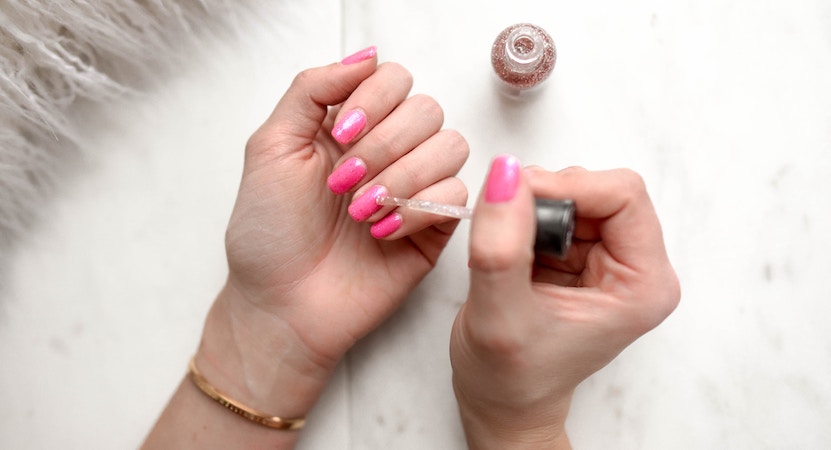Traditional nail polish comes laden with chemical ingredients and a poignant scent. In addition to the harsh odor irritating your senses, the solvents and various ingredients found in conventional nail lacquer can potentially cause irritation and health issues when inhaled in large quantities. Non-toxic nail polish provides a clean solution to protect yourself and your loved ones.
The long-term consequences of inhaling the chemical fumes from nail polish for prolonged periods include liver damage, kidney damage, and interference with your reproductive hormones, which may lead to miscarriages or infertility. In the short-term, the fumes can cause dizziness, throat irritation, eye irritation, dry, cracked skin, and migraines.
You may think that you’re okay because you don’t use nail lacquer that often, but combined with the other beauty and cosmetic products you use daily, the damage adds up.
The chemicals found in the common nail polish formulas can potentially enter your body through the nail beds. But the good news is some options don’t contain toxic chemicals such as triphenyl phosphate (TPHP) and other potentially harmful ingredients. That’s where natural or non-toxic nail polish comes in.
To protect yourself from exposure to dangerous chemicals found in traditional nail polish, you should be informed. What do you need to look for when reading labels? Which ingredients should you watch out for? Why should you switch to non-toxic brands? And what are some of the best non-toxic nail polishes on the market? We’ll also give you tips on how to apply your polish like a pro and make it last longer without chipping.
- What is Nail Polish?
- The History of Nail Polish
- The Problem with Conventional Nail Polish
- Ingredients to Avoid in Nail Polish
- Why You Should Switch to Non-Toxic Nail Polish
- How to Apply Nail Polish
- How to Remove Nail Polish
- Why Do Your Nails Keep Chipping?
- Best Non-Toxic Nail Polishes
- Best Overall Nail Polish
- Best Water-Based Nail Polish
- Best Drugstore Nail Polish
- Best 3 Free Nail Polish
- Best 5 Free Nail Polish
- Best 7 Free Nail Polish
- Best 8 Free Nail Polish
- Best 9 Free Nail Polish
- Best 10 Free Nail Polish
- Best 14 Free Nail Polish
- Best Long-Wear Formula
- Best Vegan Nail Polish
- Best Cruelty-Free Nail Polish
- Best No-Chip Nail Polish
- Best Base Coat Nail Polish
- Best Top Coat Nail Polish
- The Brand Matters
- Making the Switch
What is Nail Polish?
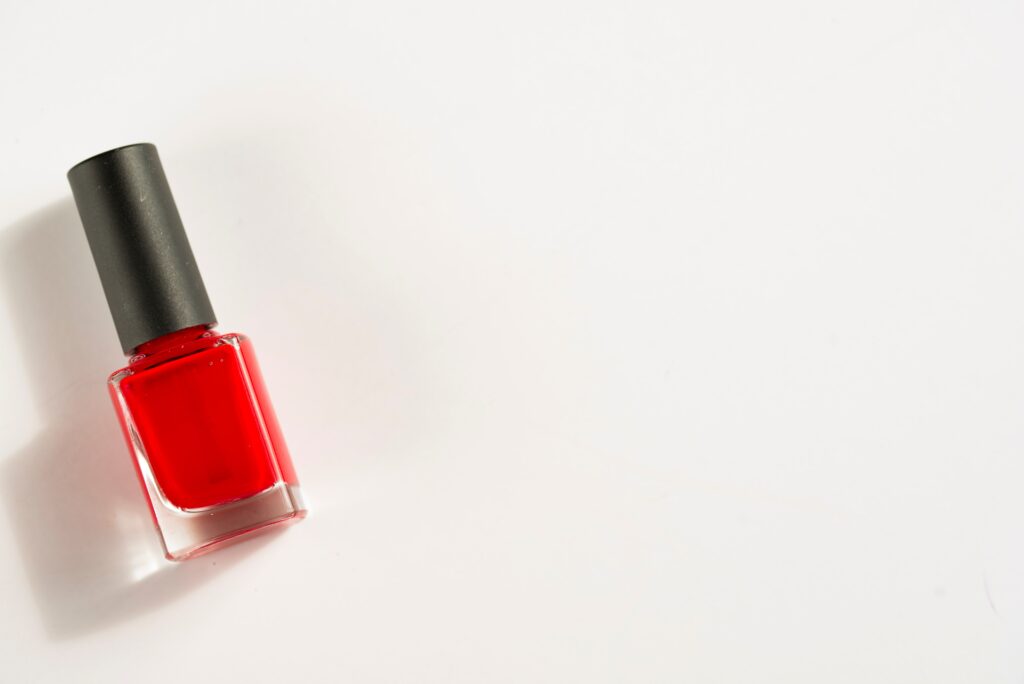
Nail polish is a cosmetic used to decorate and protect the nails. It’s also referred to as nail enamel, nail varnish, or nail lacquer. Nail color has a formulation that includes film-forming and adhesive polymers, dyes and pigments, thickening agents, and plasticizers. Together, these ingredients form a product that adheres to the nails without cracking. Nail polish comes in liquid form in a bottle with an application brush.
The History of Nail Polish
Painting of the nails was first practiced in China, in 3000 BC. Over the centuries, it became a common practice among members of the royal family. During the Ming dynasty, the basic ingredients used for nail polish were gelatin, beeswax, egg whites, gum arabic, and vegetable dyes. In Egypt, polish was used as a mark of social class. People in high society used henna that gave their nails a reddish-brown appearance. Among lower classes, pale colors were used.
Cosmetic manufacturers introduced colored nail enamel in the 1920s. At that time, the ingredients used were carmine, lavender oil, bergamot oil, and oxide tin. Consumers could choose between a variety of colors. Since then, hundreds of ingredients have been used to formulate nail colors, some of which have been identified as harmful to consumers. As a result, there’s been a recent shift in the industry as manufacturers begin to produce formulas that are healthy for users. This has seen a rise in brands that are using non-toxic ingredients in the manufacturing of nail polish.
The Problem with Conventional Nail Polish
Nail polish has a signature pungent smell. This odor comes from the mixture of chemicals used to make the paint. Unfortunately, most of those chemicals are toxic to humans. Toxins in nail lacquer are absorbed into the body through your nails, which are porous. The toxins can also be absorbed when inhaled.
Ingredients to Avoid in Nail Polish
It has become easier to avoid toxic chemicals in nail polish thanks to a labeling system that indicates how many harmful substances a formulation has left out. Here are some of the common labels that you’ll find on lacquer brands nowadays:
3-Free Nail Polish
This is a type of nail enamel that doesn’t contain formaldehyde, toluene, and dibutyl phthalate. These are known as the toxic-three since they’re the most harmful substances used to make nail color.
Toluene is a solvent that enables the ingredients in nail polish to adhere to each other. Research has found that inhaling its fumes can cause short-term effects such as dizziness, headaches, and nausea. Long-term exposure causes depression of the central nervous system. In high concentrations, toluene can cause abortion in pregnant women. Other effects include mental confusion, fatigue, and visual impairment. The European Union has restricted the use of toluene due to its toxicity.
Several studies have established that formaldehyde is a carcinogen. It’s used in nail enamel as a hardener. Formaldehyde binds to the natural keratin found on the nails, preventing them from becoming brittle. It also doubles up as a preservative. On product labels, it can be listed as methylene glycol or formalin. Following studies that linked it to cancer, formaldehyde was banned in the EU, Sweden, and Japan. Other issues that formaldehyde causes include skin and respiratory tract infections.
Lastly, dibutyl phthalate (DBP) minimizes chipping in lacquer. It’s one of the substances that cosmetic manufacturers are abandoning due to toxins. Studies have shown that it mimics estrogen in the body, disrupting hormonal balance. In women, it can initiate early menopause, while it impairs reproductive development in male babies. DBP also inhibits kidney and liver function.
5-Free Nail Polish
5-free nail polish doesn’t contain formaldehyde resin and camphor in addition to the toxic-three. Camphor is the substance that gives nail polish its shiny and glossy appearance. Users are exposed to camphor when it’s absorbed through the skin or inhaled. Camphor is highly toxic and can lead to neurological complications, convulsions, and fetal deaths.

Formaldehyde resin adds a coating on the nails, giving them a glossy finish. It can cause allergic reactions in some people and irritation to the skin.
7-Free Nail Polish
This is a non-toxic nail polish that lacks ethyl tosylamide, xylene, formaldehyde, toluene, DBP, formaldehyde resin, and camphor. Ethyl tosylamide is a plasticizer that softens polymers used in nail varnish to keep them from cracking on application. It also forms a film coating on the nails. In the body, ethyl tosylamide mimics antibiotic activity. This contributes to antibiotic-resistance, which weakens immunity.
Xylene is a petroleum-based solvent that, when inhaled, causes headaches and dizziness.
9-Free Nail Polish
Parabens and acetone are the additional ingredients avoided in 9-free nail polish in addition to those not found in 7-free lacquer. Acetone is a solvent that dissolves polymers and dyes in nail polish. It dries up the nails, making them easy to break. Parabens are a group of compounds used as preservatives to extend the shelf life of polish. They include methylparaben, butylparaben, and ethylparaben. These chemicals mimic estrogen activity in the body, which increases the risk of breast cancer. Parabens also cause toxicity in neurological and immunology systems in the body.
10-Free Nail Polish
Ten chemicals, including those not found in 9-free polish and triphenyl phosphate (TPHP), are avoided in 10-free nail lacquers. TPHP is absorbed through the skin and nail bed into the bloodstream. In the body, TPHP disrupts endocrine function. TPHP is also a skin irritant.
14-Free Nail Polish
A total of 14 toxic ingredients are avoided in 14-free formulations. These are formaldehyde, toluene, DBP, camphor, formaldehyde resin, xylene, ethyl tosylamide, colophonium, parabens, TPHP, tert-butyl hydroperoxide (TBHP), organic halides, silicone, and animal-derived ingredients.
Colophonium causes dermatitis, while organic halides such as bromine can lead to nerve damage. Silicones such as dimethicone speed up the drying process of enamel. However, silicones are allergens and non-biodegradable, which is harmful to the environment. Animal-derived ingredients promote cruelty due to lab tests that cause animal death and suffering. Most vegan nail polish colors are, therefore, 14-free.
Why You Should Switch to Non-Toxic Nail Polish
Switching to non-toxic nail polish gives you the decorative and protective effect you want without compromising your nails or general health. Most formulations that do away with harmful chemicals replace them with plant-derived and organic ingredients that nourish the nails and cuticles. Moreover, you’re assured that these safer alternatives won’t be harmful to your health even in the future.
How to Apply Nail Polish
Applying nail polish seems like a no-brainer and it shouldn’t be hard. But it takes precision and skill to apply it like a pro. Once you learn the basics of a flawless application, you’ll no longer need to visit the salon each time you need a fresh manicure or pedicure.
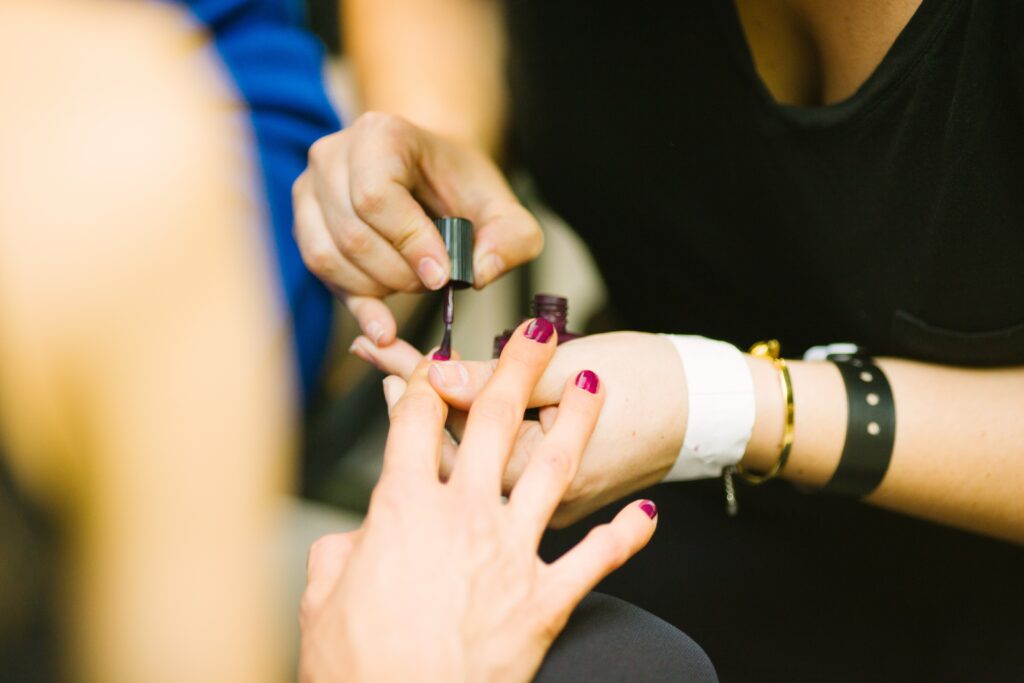
Here’s a step by step guide on to apply non-toxic nail polish like a pro:
- Prepare Your Nails – Prepare your nails by removing old polish. This allows for a smooth application. Also take the time to trim, file, and smooth the nails. Use a slightly abrasive buffer to make the surface even, ensuring you move it in one direction to avoid tearing. For an elegant finish, shape your nails in a round, square, or oval shape.
- Soak Your Fingers – Fill a small bowl with warm water and squirt a little cleaner into it. Soak your hands in the bowl for 3 minutes. Clean your nails and the skin next to them with a gentle scrubber to remove any dirt and oil, which may affect the adhering of the lacquer to your nails.
- Push Back Your Cuticles – Soaking your fingers makes the cuticles soft, and thereby easy to push back. Pushing them back gives the nails a defined shape at the base and sides. Avoid cutting cuticles as they protect the nail matrix from infections. However, cut any dry or overhanging skin.
- Apply Petroleum Jelly or Glue – For easy clean-up after application, apply petroleum jelly or school glue to the skin around the nails. The excess color will settle on the glue or jelly instead of sticking to your skin.
- Use A Base Coat – Always use a base coat before applying varnish. A base coat extends the polish life while strengthening and protecting your nails from staining. Remember to allow the base coat to dry before applying non-toxic nail polish.
- Apply the Varnish – Apply the first coat of polish in three strokes. Begin with the left side, pulling the brush from the base of your nail to the tip. Do the same with the right side, then finally apply polish on the central part. Don’t shake the bottle before using the varnish as this will create air bubbles that may cause bumps when you apply. Instead, tip the bottle upside down and roll between your hands. You can apply 2 to 3 coats depending on how sheer your lacquer is. Let each coat dry first to achieve an even, neat finish.
- Add A Top Coat – Once the varnish has dried, apply a top-coat. This adds shine and keeps the polish from chipping.
- Dry the Polish – Dry your nails in cold water. Fill a bowl with ice-cold water and soak your fingers for a minute or two.
- Clean the Edges – Using a cotton swab, wipe the jelly from the sides of your nails. The jelly will come off along with any extra polish. If you used glue, peel it off.
- Apply Cuticle Oil – Religiously apply cuticle oil to your nails and fingers to hydrate them. The oils also keep your cuticles from drying.
- Storage – You can store your polish in the refrigerator to ensure it remains usable for a long time. Exposure to sunlight and heat causes the color to change and thins the varnish.
How to Remove Nail Polish
Depending on whether your nail polish is long-wearing or not, there are several ways to remove it. A conventional nail polish remover usually has an organic solvent containing oils, fragrance, and coloring. For conventional removers, you can get pads that are presoaked with remover liquid or a container with foam where you dip your nails before wiping off the varnish and remover. You can also use a bottle that contains a liquid remover where you soak a cotton pad and use it to get rid of the polish.
Here’s how to use a liquid remover:
- If using a conventional acetone remover, ensure you’re in a well-ventilated area. This ensures that you don’t inhale any fumes from the remover as they can be toxic. Inhaling acetone for one can induce nausea and cause fatigue.
- Next, dampen a cotton pad with the remover and press it on your nail. Move it up and down, applying a bit of pressure. This will get rid of most of the varnish. If any polish remains, repeat the process.
- Lastly, wash your hands in soapy water and dry them.
When using a remover, we recommend choosing one that doesn’t contain acetone, which is a common toxic ingredient. That is because acetone causes both the nails and the skin near it to dry up and eventually crack. The remover should contain mild ingredients and even better, nourishing extracts that strengthen and moisturize the nails.
If you would like to avoid traditional polish removers, here are some DIY nail polish removers you can use to wipe off your varnish:
- Use a Vinegar Solution – Mix vinegar and lemon in a bowl, then soak your fingers in the solution for 10 minutes. That will make it easier to remove the polish with a cotton pad.
- Apply Toothpaste – White toothpaste can lift the color from your nails, after which you can wipe it off. Apply a little toothpaste, then scrub with a paper towel. For quicker and better results, you can mix the toothpaste with baking soda.
- Use New Polish – Apply a fresh coat of polish on your varnish and wipe it away with a paper towel before it can dry. The new lacquer will soften the old one, turning it into liquid, thus making it easy to remove it.
- Spray Perfume – Spraying a little perfume on your old polish can get rid of it. Spray a little bit on a towel, then rub it over your nails. If you don’t get rid of all the varnish with the first trial, repeat until your nails don’t have polish.
Why Do Your Nails Keep Chipping?
If your nails are constantly chipping, you may be doing one of several things wrong. Here are the reasons why your polish doesn’t last even when you use the best brands available:
- You Don’t Allow it to Set – While it may take your base coat, polish, and top-coat a few minutes to dry, a considerable amount of time is required for them to set. The setting may take up to 6 hours, which is when the varnish completely adheres to your nails. Doing activities that agitate your nails, such as taking hot showers or cleaning dishes, can cause chipping. If you can, do your manicure at night an hour before bedtime. That way, your polish will have enough time to dry and set throughout the night.
- Your Nails are Dry – If your nails break easily, the chances are that your enamel will too. To prevent that, make a habit of applying lotion to your hands. Nourishing ingredients such as shea butter will keep your nails and cuticles healthy and prevent them from becoming brittle.
- You Skipped the Base Coat – Many people don’t realize the importance of a base coat, and it could be the reason why most coats don’t last. Besides preventing staining, it allows for smooth application.
- You’re Using the Wrong Formula – Like makeup, nail polish is not a one-fits-all product. If your color keeps peeling even after following all the necessary steps during the application, try changing the formula or brand of your varnish. It’s possible the polish you’re using is unable to adhere to your nails because of their natural oil content.
- Applying Too Much Polish – With most lacquers, less is more. For sheer colors, one coat can be enough, while for opaque ones, two coats will do just fine. Applying too many coats makes it hard for the polish to dry well. That could lead to the breaking and peeling of the lacquer.
- Adding Coats Too Quickly – Not waiting for the base coat to dry before applying polish is setting yourself up for a short-lived manicure. So is adding the top coat before the color dries. Ultimately, your polish will peel if you don’t let each coat dry thoroughly.
Best Non-Toxic Nail Polishes
1. Best Overall Nail Polish

Aila Nail Polish
Aila nail polish avoids 16 of the traditional ingredients that dry out nails, damage skin, and cause internal organ toxicity. It also doesn’t contain animal products and is fully vegan. The formula doesn’t use products that introduce gluten to nail varnishes, such as wheat. Methylisothiazolinone, parabens, and formaldehyde are some of the conventional preservatives not included in making Aila. Plasticizers such as TPHP, DBP, and ethyl tosylamide are also avoided. Even without including these common chemicals, Aila non-toxic nail polish is long-wearing, shiny, and chip-resistant. With these attributes, this varnish caters to a variety of beauty needs in a safe toxin-free formulation.
2. Best Water-Based Nail Polish
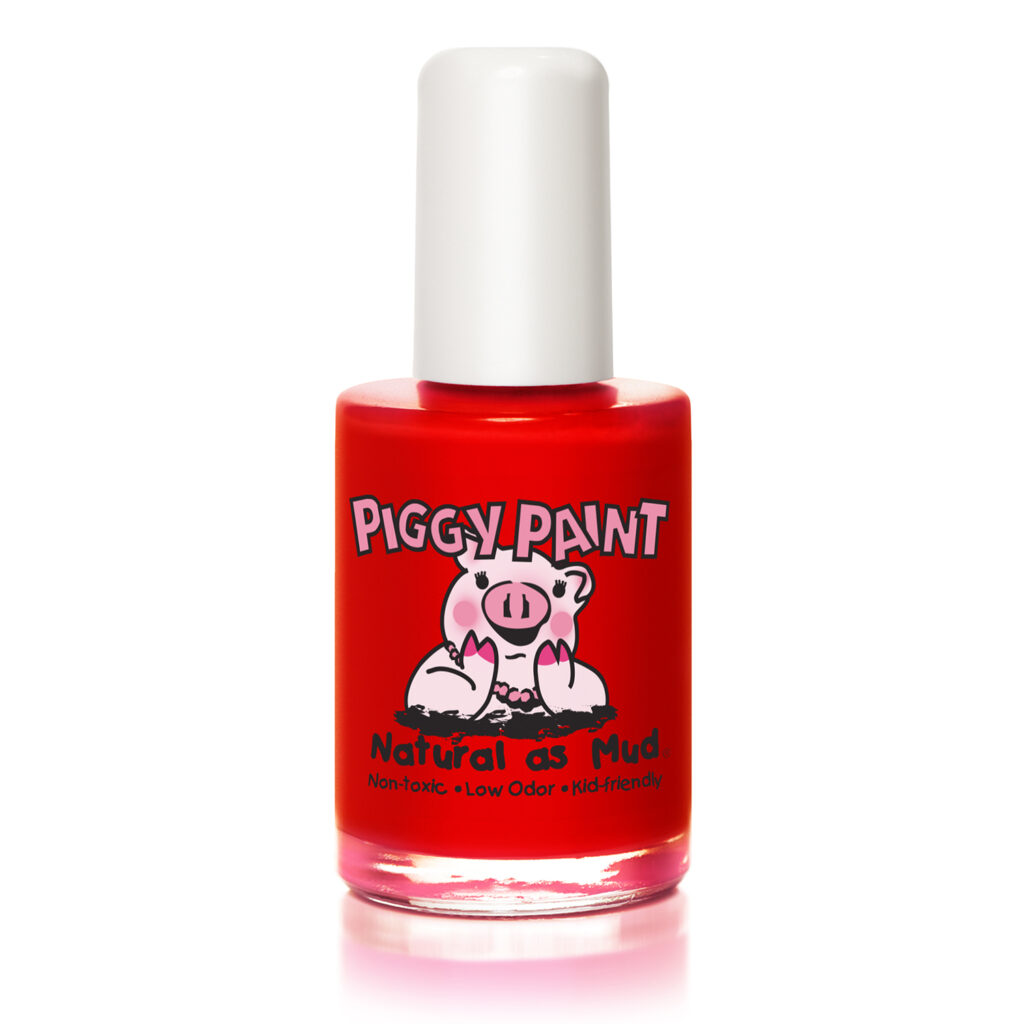
Piggy Paint Natural as Mud Nail Polish
This water-based formula is non-toxic, cruelty-free, and odorless. It’s hypoallergenic and available in a host of fun, vibrant colors that make it an excellent choice for kids. Chemical ingredients that have been excluded in the polish include acetone, ethyl acetate, toluene, phthalates, and formaldehyde. This makes it safe to use during pregnancy as it doesn’t expose mothers to toxic fumes or dangerous chemicals that may get into the bloodstream, and eventually to the baby. You can get the polish in a range of colors such as Wild Child, Pom Pom Party, and Sweetpea.
3. Best Drugstore Nail Polish
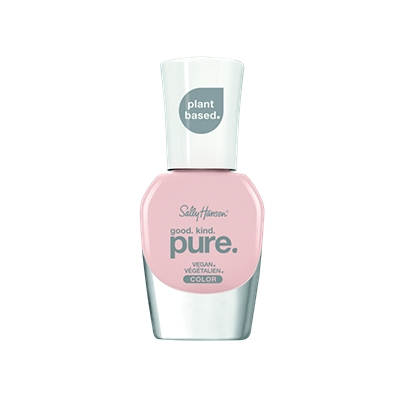
Sally Hansen Good. Kind. Pure. Nail Polish
Clean, plant-based, and vegan, this Sally Hansen non-toxic nail polish is one of the best drugstore varnishes you can use. It’s available in 30 colors, allowing you to find one that suits your style and preference easily. Its non-toxic formula doesn’t include a total of 16 conventional chemicals that may harm your nails and general health. These include sulfates, formaldehyde, phthalates, camphor, and animal-derived ingredients. Plant-based ingredients in this polish include potato, wheat, corn, and sugarcane.
4. Best 3 Free Nail Polish

O.P.I Nail Polish
As a three-free formulation, O.P.I nail polish doesn’t include formaldehyde, toluene, and DBP in its ingredients. This lacquer is available in a variety of colors and shades to suit every occasion, outfit, mood, and season. It incorporates ProStay Technology that keeps the coat of color shiny and vibrant for up to 11 days.
5. Best 5 Free Nail Polish

Idun Minerals Nail Polish
Idun minerals nail polish is a 5-free formulation that includes nourishing ingredients such as almond oil and minerals that strengthen nails. It’s available in 18 shades.
6. Best 7 Free Nail Polish
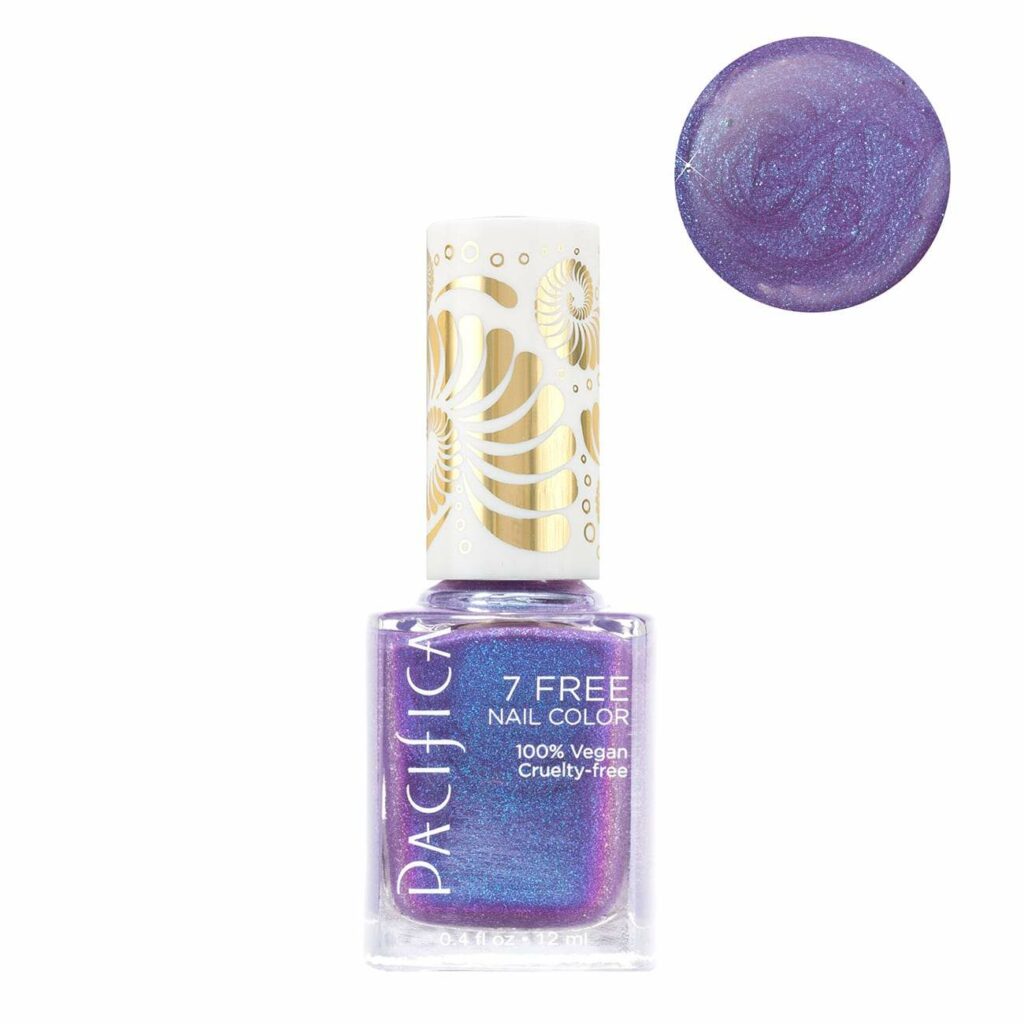
Pacific 7 Free Nail Polish
The Pacifica 7-Free nail polish avoids toxic ingredients while still providing amazing results in terms of wear and colors. It comes with a vegan brush for smooth application.
7. Best 8 Free Nail Polish
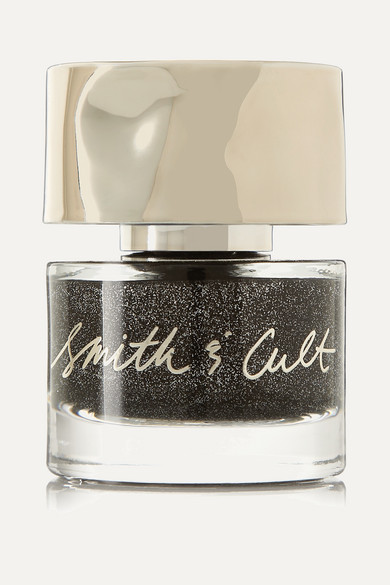
Smith & Cult Nail Polish
This is a vegan and gluten-free formula without DBP, triphenyl phosphate, ethyl tosylamide, toluene, formaldehyde, camphor, formaldehyde resin, and xylene. Each color is made to give a brilliant shine while providing great coverage. The polish is also chip-resistant.
8. Best 9 Free Nail Polish
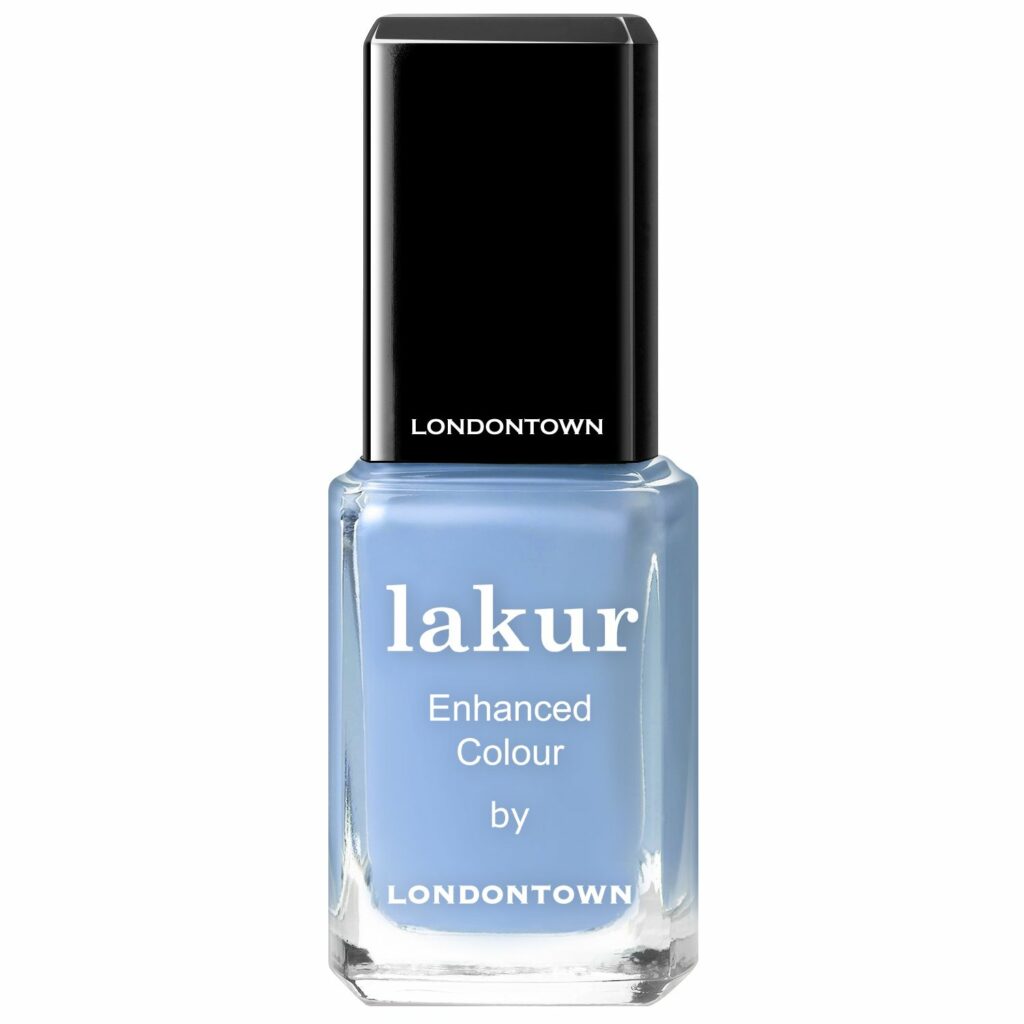
Lakur Enhanced Colour by Londontown
The Lakur Enhanced Colour is a vegan, cruelty-free, 9-free varnish. Available in several bold colors, it’s infused with mineral oils and botanicals that restore and maintain nail health. It’s long lasting, wears like gel, and has a noticeable shine. This polish is ideal if you’re looking for organic nail lacquer.
9. Best 10 Free Nail Polish
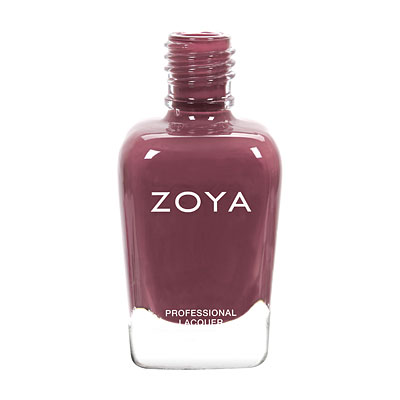
Zoya Professional Lacquer
Aubrey by Zoya is a long-wearing, 10-free nail polish made without TPHP, lead, parabens, toluene, DBP, and other traditionally used toxic substances.
10. Best 14 Free Nail Polish
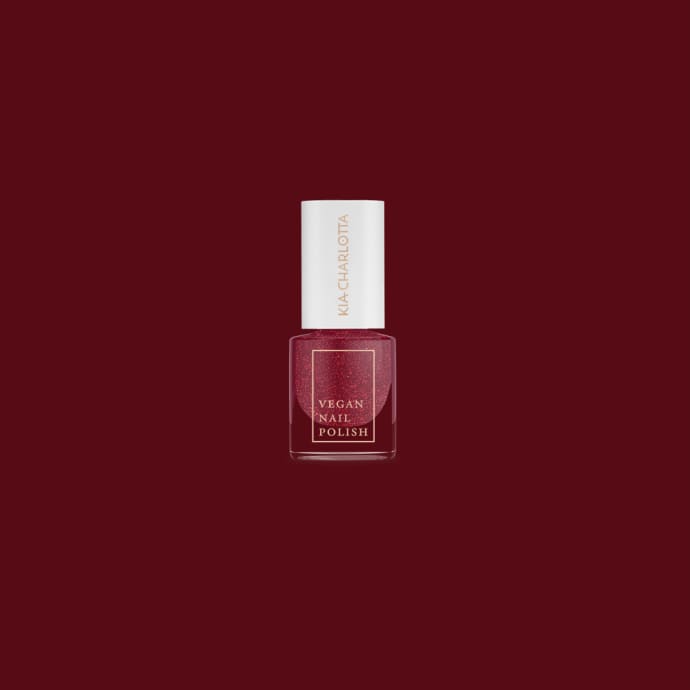
Kia Charlotta Nail Polish
Kia Charlotta is one of the brands known for its 14-free nail color formulas. While it’s near impossible to make nail polish without using chemicals, this lacquer has avoided most of the toxic substances commonly used to make varnishes. The formulation also doesn’t have fragrances or animal ingredients.
11. Best Long-Wear Formula
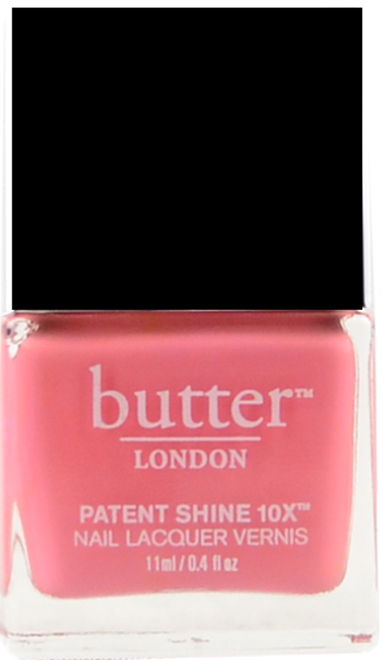
Butter London Patent Shine 10X Nail Lacquer
This lacquer uses Shock Resistant Polymer Technology that provides long wear and chip resistance. The Butter London Patent Shine 10X nail lacquer can maintain its shine for up to 10 days. UV absorbers in the formulation protect it from fading, while diamond powder brightens the colors and adds shine. It’s an 8 free nail polish and contains ingredients such as bamboo extract, which strengthens the nails. This non-toxic nail polish comes in mini-sized bottles that are travel-friendly.
12. Best Vegan Nail Polish

Context Nail Lacquer
The Context nail lacquer is 100% vegan, cruelty-free, and 5-free. It dries quickly, leaving a shiny opaque coverage. Ingredients used include nitrocellulose, a popular film-forming polymer, titanium dioxide that provides protection from UV rays, and glycol anhydride.
13. Best Cruelty-Free Nail Polish
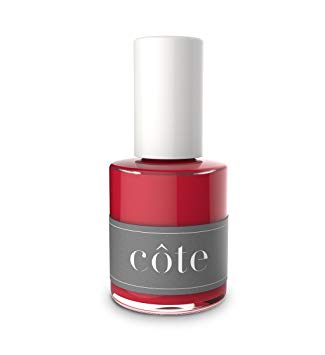
Côte Toxin Free Nail Polish
Côte toxin-free polishes are cruelty-free, excluding animal products from their formulation. They’re also 7-free, meaning they’re made without toxic ingredients such as camphor, toluene, and DBP.
14. Best No-Chip Nail Polish
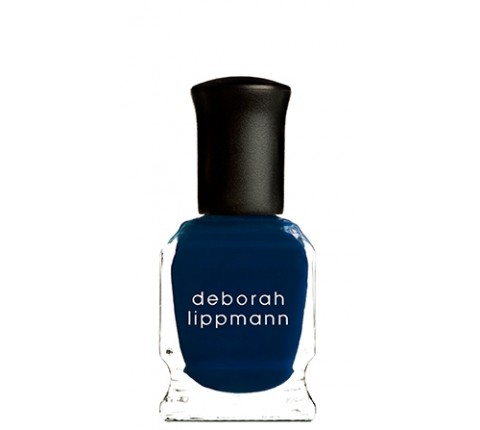
Deborah Lippman Gel Lab Pro
The Deborah Lippman Gel Lab Pro polish will save you repeat visits to the salon by remaining chip-free for longer. It contains ingredients such as keratin and biotin, which contribute to your nail health.
15. Best Base Coat Nail Polish
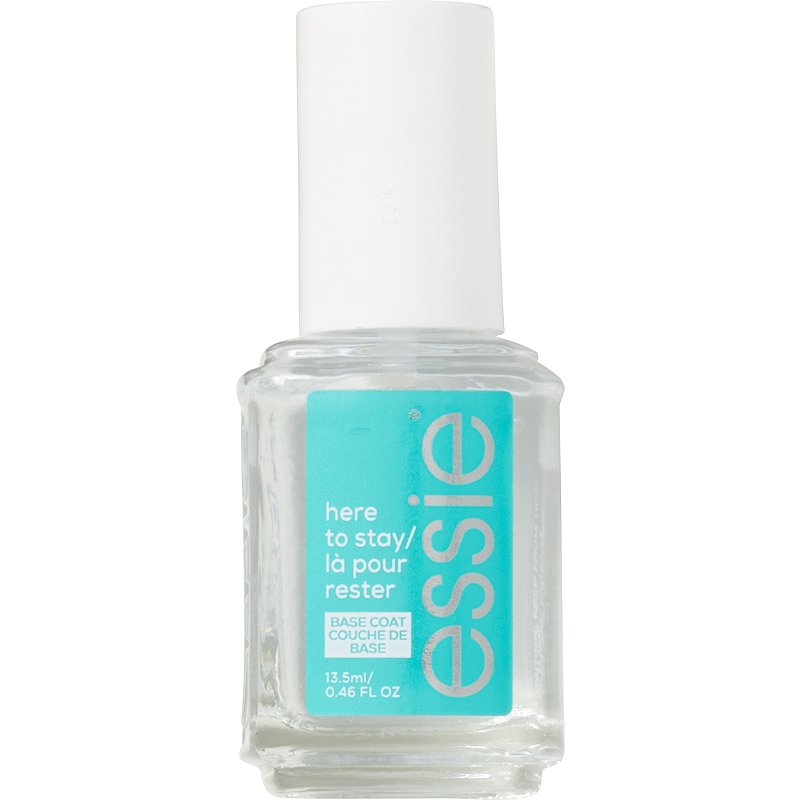
Essie Here to Stay Base Coat
The Essie Here to Stay base coat is made with innovative color-adhesive technology that holds color to nails for longer staying power. The base coat creates a barrier between the nail and varnish, thereby preventing staining.
16. Best Top Coat Nail Polish
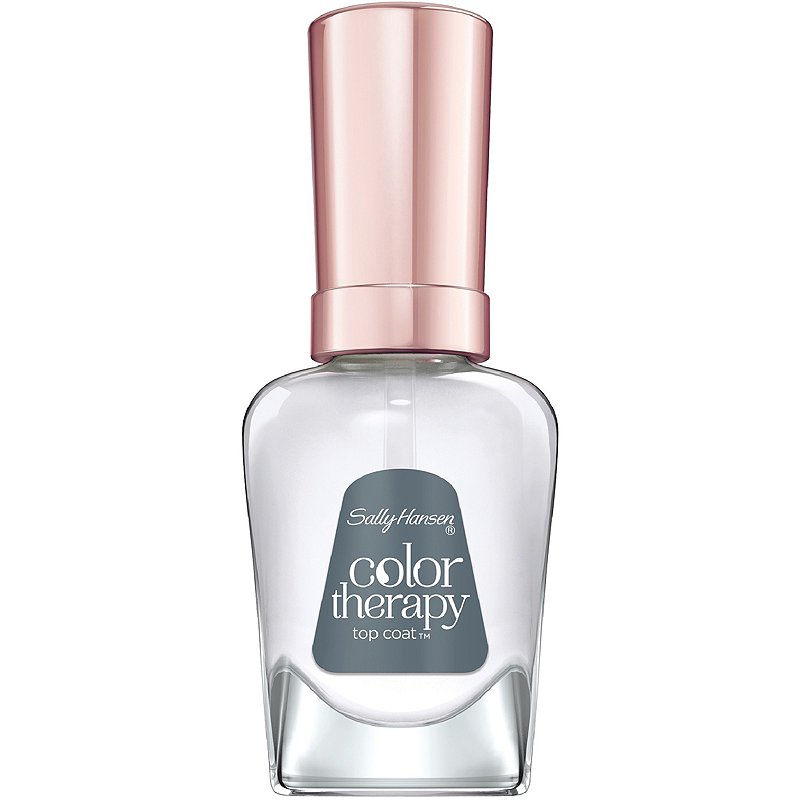
Sally Hansen Color Therapy Top Coat
This top coat gives nail polish a shiny, long-lasting finish while using non-toxic ingredients such as safflower and kernel oil for nail care. It also includes an argan oil formula that seals in color and prevents fading.
The Brand Matters
The easiest way to find authentic, clean nail polish is by looking for brands that have made it their mission to omit toxic ingredients from their products. Such brands use as little synthetic chemicals as possible, include beneficial plant extracts, and avoid animal products. Some brands also only use recyclable packaging to protect the environment. A good place to start when looking for safe brands is organizations that watch over consumer products such as MarketWatch or EWG. These organizations give brand reviews and consumer feedback and will have a list of different brands that manufacture non-toxic nail polish. That way, you can choose one or several nail polishes from the various brands available.
Making the Switch
Switching from your old toxic lacquer to a safer, non-toxic nail polish shouldn’t be hard because natural nail polish formulations can be both long lasting and nourishing for the nails. They also give an attractive shine and prevent chipping just like their traditional counterparts. It is, however, advisable to be cautious when choosing polish that claims to exclude any number of toxic ingredients. Just because it hasn’t included some toxic chemicals doesn’t mean the ones it’s used in their place are safe enough. So, even if your formula is 10-free, check the present ingredients to ensure they’re safe.
While applying nail lacquer only exposes you to seemingly harmless amounts of chemicals, remember that long-term use equals long-term exposure. That said, some of these chemicals are quite harmful to the body even in small concentrations, so it’s better to avoid them all together.
Did You Enjoy This Article?
If you enjoyed this article, you might also like our articles discussing skincare such as 13 Best Eyelash Growth Serum, Honey for Face, and 21 Best Facial Toner.

